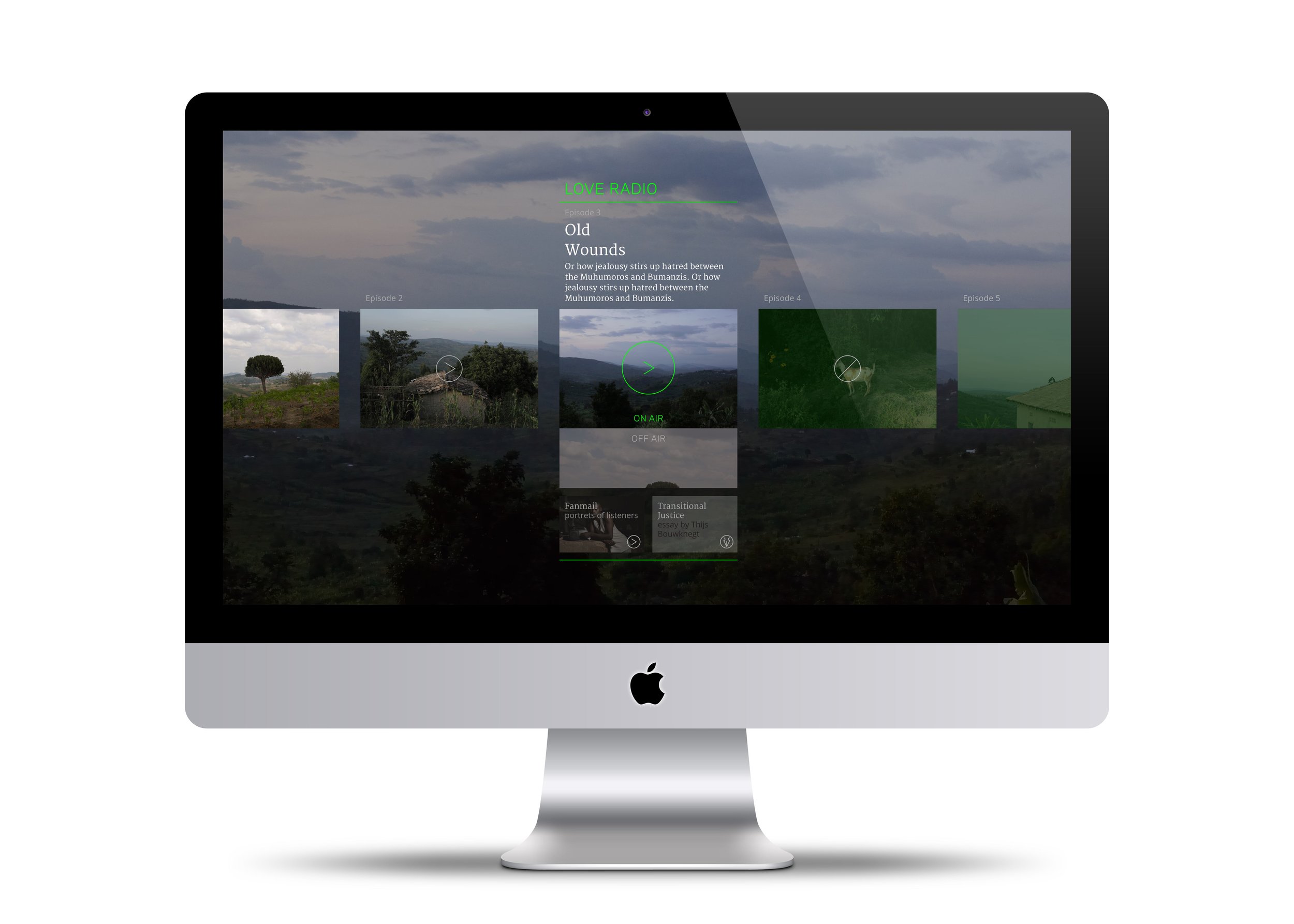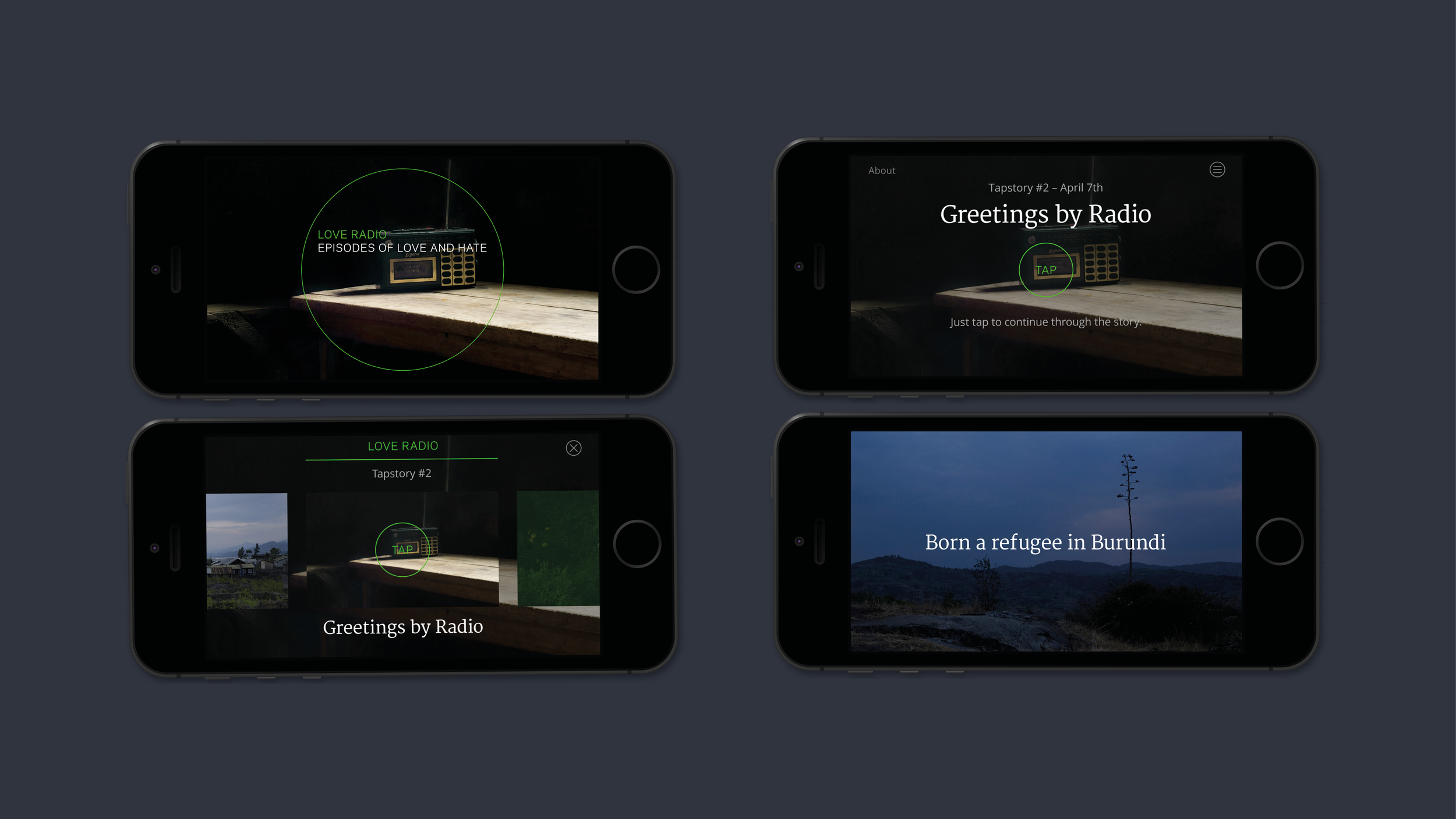Web documentary, tapstories, exhibition
How do you spread a message of love and reconciliation in times of hate speech? We listened to the work of colleagues in Rwanda.
Eefje visited Rwanda for the first time in 2009, together with photographer Anoek Steketee for their project Dream City. There they also met the makers of the immensely popular soap Musekeweya (New Dawn) who try to contribute to the process of reconciliation after the genocide by means of radio. Eefje and Anoek were very impressed by the soap that’s not only relevant for Rwanda. Hate speech occurs more and more in The Netherlands as well.
Eefje and Anoek decided to ‘translate’ the Rwandese radio soap to a Western audience and created the transmedia project Love Radio, which exist of a web documentary, mobile tap stories and an exhibition.
“Twenty years ago, radio in Rwanda spread hate. Today it’s love.”
SYNOPSIS
Love Radio straddles the thin line between fact and fiction. At first glance it tells a linear, almost fairy-tale narrative, based around the radio soap Musekeweya (‘New Dawn’). But a closer look reveals the complex reality. While in the soap happy endings predominate, reconciliation in real life is rather more intransigent. After the gruesome killings, how can perpetrators and victims live with and love each other?
Twenty years ago, some 700,000 Tutsi and tens of thousands of moderate Hutu were murdered in what can be called one of the darkest episodes in recent history. Virulent hate campaigns in the media were at the heart of the genocide. On the same frequency that in 1994 incited the murder of the Tutsi ‘inyenzi’ (cockroaches), the radio soap Musekeweya today broadcasts a message of reconciliation. The soap is immensely popular, with millions tuning in to the weekly episodes.
While the radio show has an idealistic premise, this project also raises some questions. Can fiction get people to reconcile? Or is this positive voice merely a veneer in a country still coping with the traumas of the genocide? And what does reconciliation actually mean? In Love Radio the complex reality emerges gradually. In addition to the radio program’s fictional story line, the project shows the reality that Rwandans have to cope with through interviews with the soap opera’s makers and listeners.
ENSEMBLE PROJECTS
Many Prospektor projects are ensemble mega projects. Multimedia, multiplatform, articles, books, exhibitions, films, sometimes all of them. Because we believe this way we can have a lot more impact, than when we’re only telling the story one time. Since we started Prospektor, we have been creating interactive, online transmedia projects more and more. These projects, even more than a film or a collaboration with a photographer, ask for an interdisciplinary approach. This was definitely the case with Love Radio, which combines photography, written stories, film, graphic design and interaction. We made Love Radio together with Anoek Steketee, but also in close collaboration with interactive designer Sara Kolster, graphic designers Kummer & Herrman and programmers Martijn Eerens and Thijs Gadiot.
“In a beautiful video collage, listeners tell about the hate, shame and remorse they felt after the genocide.”
WEBDOCUMENTARY
Like a soap, Love Radio unfolds in episodes, with its own characters, plotlines and cliff-hangers. The first episode went live on 7 April 2014, exactly 20 years after violence broke out. For the following 100 days – the duration of the genocide – new instalments were released on a fortnightly basis. Now that these 100 days are over, the documentary is complete and can be watched in parts or as one production.
The web documentary comprises two layers: an upper layer – On Air – and a lower layer – Off Air. On Air retells the radio soap’s fictional story of hate, violence, love and reconciliation between two rival villages. Cinematic images are combined with audio fragments from the soap to convey the programme makers’ message of reconciliation.
At various moments throughout the documentary, viewers are introduced to the lower layer. This is where we ask critical questions about the positive image portrayed and reveal what is not said On Air. This layer provides a glimpse behind the scenes of the soap. Actors and audience have their say, thereby painting a picture of contemporary Rwanda.
Adding context to the themes addressed – such as transitional justice, trauma, mythologisation and the present and future of Rwanda – are essays by journalists and academics, including Scott Straus, René Lemarchand, Koen Peeters and Felix Ndahinda.
Smartphone visitors to the website will see special tappable stories: short, intimate stories in photography and text that are complementary to those in the web documentary.
EXHIBITION
The exhibition (11 July until 7 September 2014) in Foam, Amsterdam consisted of photo’s and video installations.
The photo’s and video installations do not have a strictly documentary approach. The camera is not only used to address social issues but also as an instrument of imagination. By playing with light and sometimes directing the portrayed, alienating images emerged, with the environment as a confining décor.
Love Radio in FOAM, 11 July - 7 September 2014
AWARDS
SXSW Best Visual Media Experience in the Interactive Innovation competition 2015
POPCAP 2014
Zilveren Camera 2014
Lens Culture Visual Storytelling Awards 2014
Prix Italia 2014 - Nominated







